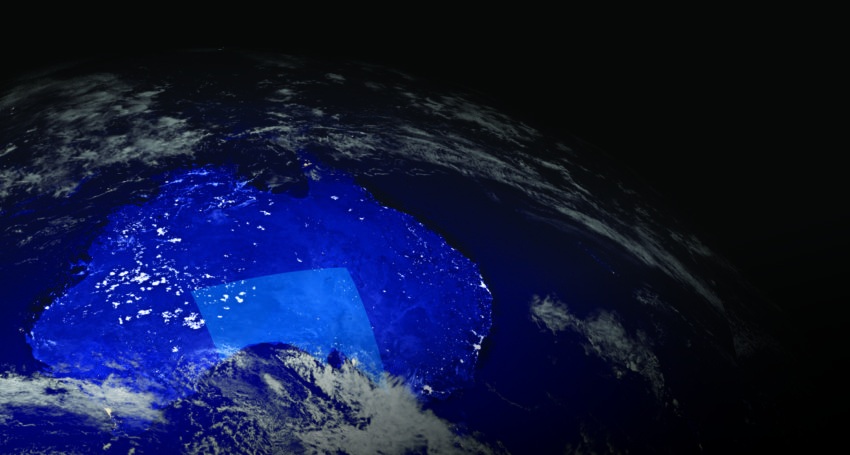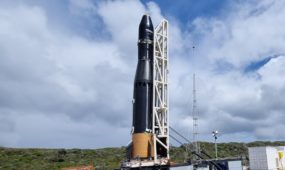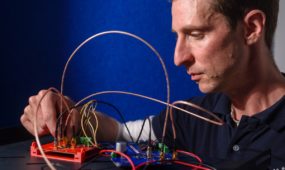International Astronautical Congress expands space frontiers in South Australia
Space
When a convention begins with record numbers of delegates washing down 7,380 fresh Smoky Bay oysters with 1,248 bottles of fine South Australian wine and ends with Elon Musk outlining his Mars plans, the days in-between have much to live up to.

Sign up to receive notifications about new stories in this category.
Thank you for subscribing to story notifications.

The International Astronautical Congress (IAC) at the Adelaide Convention Centre last week delivered on all counts, both to the 4,470 visiting delegates and to South Australia.
The week began with the announcement that Australia would finally have a dedicated Space Agency to grow the current $4 billion industry, news that was welcomed by the heads of visiting space agencies.
NASA Acting Administrator Robert Lightfoot said the agency would provide an excellent opportunity to increase the collaboration with Australia, adding he found Australia not having an agency until now “a little bit strange”.
“From a NASA perspective we’ve had a great partnership with Australia for a long time and I look forward to seeing which areas Australia decides to focus on,” he said.
“I think that will be their challenge but there’s enough room for them to participate in what we’re doing.”
Michael Davis, the Chair of the Space Industry Association of Australia, said organising the congress made South Australia a leader in space industries and the South Australian government’s space plan would help the state influence the new National Space Agency.
“The South Australian government backed our bid [for the congress] right from the beginning, going back eight years,” he said.
“When we won the bid, they saw the opportunity. They didn’t wait till the congress took place, they formulated and implemented a strategy that has led directly to the announcement of the South Australian Space Industry Centre and the $4 million in funding.”
A week before the National Space Agency announcement, South Australia’s Minister for Defence and Space Industries Martin Hamilton-Smith pledged $4 million over four years to boost the space industry in South Australia.
Hamilton-Smith also opened the South Australian Space Industry Centre to drive space industry innovation, research and entrepreneurial development.
During the congress South Australia further strengthened its leadership by partnering with the ACT and the Northern Territory to jointly develop Australia’s space sector.
Having the IAC in Adelaide gave South Australian space companies the opportunity to engage directly with global players.
Hamilton-Smith said international collaboration was a key component of South Australia’s space strategy and it was fantastic that the state was able to form new partnerships at IAC2017.
“Local companies have signed agreements with some key players in the global space market, which is an indication of the level of talent we have in South Australia,” he said.

The prototype of the ResearchSat 3D-printed titanium box fits CubeSats to reduce cost of biological experiments.
The South Australian government last Friday announced the South Australian Space Innovation Complex, a new partnership with more than 15 Australian and international space start-ups to develop the state’s space industry after the congress.
The consortium will work with the state government to establish facilities in South Australia for launch testing, technology development, stepped flight-proving programs and space-qualification missions.
“We had some excellent opportunities during the congress to increase our collaboration and co-operation with some of the key players in the global space race,” Hamilton-Smith said.
“Our efforts in space don’t end here and now is the time to launch further into this booming industry by capitalising on the momentum from IAC. The South Australian Space Innovation Complex will help take us to the next chapter of challenges and opportunities.”
Included in those opportunities was micro-satellite company Inovor signing a deal with Italy’s largest space company SITAEL to set up the company’s Australian office in Adelaide.
Fleet, the South Australian company looking to connect the IoT with small satellites, had the French space agency CNES agree to track the company’s satellites once launched, while Nova Systems announced that former Space Shuttle commander Pamela Melroy would move to Adelaide to work with the space company.
The state government also began a partnership with the German Aerospace Centre (DLR) and pledged to expand support of the University of South Australia’s South Hemisphere Space Studies Program.

Dr Matthew Tetlow at the University of Adelaide with a CubeSat that was launched by NASA earlier this year.
The IAC was also an economic boon for Adelaide.
Damien Kitto, the CEO of the Adelaide Convention Bureau, said the congress was what hosting conferences was all about.
“The IAC has absolutely captivated the city and in addition to the immediate benefit of the large economic impact for tourism operators, it is the value of the incredible legacies that come into play well after the last delegate has returned home that truly highlight the importance of winning these large-scale industry events for South Australia,” he said.
Kitto said the congress brought more than $24 million into the city, with hotels benefiting from 32,326 bed nights and more than $1.2 million being spent on regional and city sightseeing tours, including night sky tours near the River Murray.
According to the Convention Bureau, this economic impact created and supported the equivalent of 229 jobs.
The congress also tested the $397 million redevelopment of the Adelaide Convention Centre, which according to International Astronautical Federation President Jean-Yves Le Gall handled the event very well.
“The Adelaide Convention Centre (ACC) has demonstrated to be an outstanding venue, having logistics perfectly sorted,” Le Gall said.
“Adelaide itself is a perfect location for congresses with easily reachable locations, beautiful scenery, friendly people and fantastic food.”
Outside the convention centre the space theme was taken up by the State Library and South Australian Museum.
The “From Outback to Outer Space: Woomera 1955-1980” exhibit at the library drew close to 7000 visitors, and the museum brought in a further 12,000 to its “Spectacular Space” exhibition.
Across the week 700 students, including those from the newly announced Hamilton College Space School, 300 volunteers and 3,500 open day visitors learned about the future of space.

Hamilton Secondary College’s space centre is based on the Mars experience at the Victorian Space and Science Education Centre.
Elon Musk rounded out the week telling the world he was putting all his resources toward developing his BFR to not only travel to Mars but also to reduce earth travel times to under an hour and establish a lunar base.
“It’s 2017, we should have a lunar base by now. What the hell is going on?” the SpaceX CEO wondered.
And when Musk wonders, the world usually takes note.
Jump to next article



